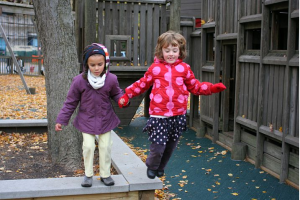Last spring, there was a minor outcry when the Auburn School District in Maine announced that it would be piloting a one-to-one iPad program with its kindergarteners. Part of the uproar involved the cost of the program -- some $200,000. But much of it involved the notion that somehow young children should not be exposed to technology, that somehow iPads and other gadgets inhibit their imagination and make them play less -- or, to slightly modify one of Apple's famous logos, to "play different."
But is that really the case? Has technology really dampened the way children play?
A new study (PDF) of children's playground games and songs suggests that much of the outcry about declining kids' play may be exaggerated. The research comes from a collaboration between the Universities of London, Sheffield and East London, along with the British Library, and draws from the Opie Collection and the work of the famous children's folklorists Lona and Peter Opie.
And as most folklorists will tell you, the discipline itself has always been associated with the idea that cultural practices -- whether of children or adults -- are dying out, and that songs and games and folktales must be collected and preserved to prevent that from happening. So it was in the 19th century, and so it is today.
Things have changed since the Opies did their research on children's folklore in World War II. It isn't simply the rise of technology or media influences; family structure is more fluid (with more divorces, for example) and the definitions of childhood, adolescence, and adulthood have changed too. Children, particularly those from higher socio-economic backgrounds, have more leisure time, but there's also more surveillance over their activities -- no matter their background. No more playing freely in the street, for example. The playground space -- where many folklorists observe children's games and songs -- has changed as well.


